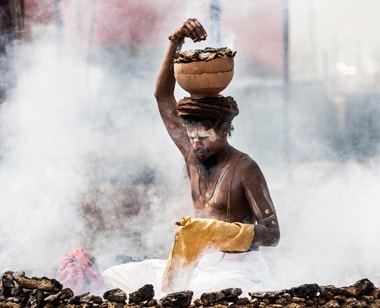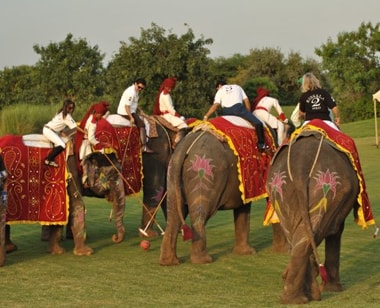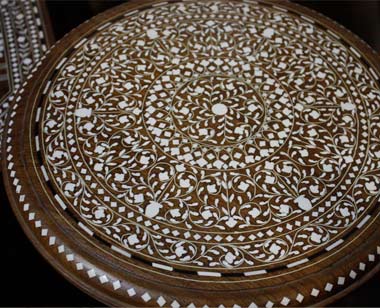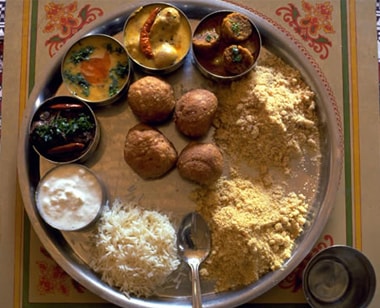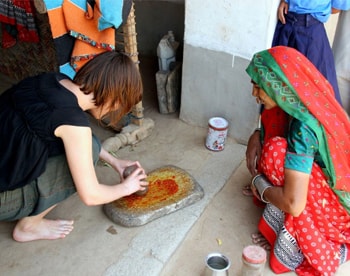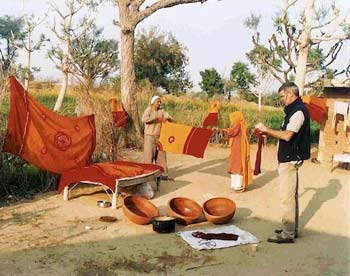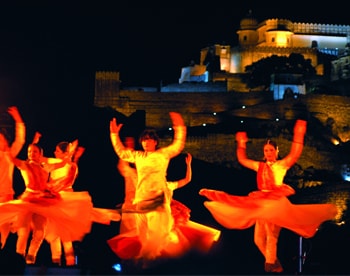The district is known after its headquarters town of Alwar. There are many theories about the derivation of the name Alwar. Cunningham holds that the city derived its name from the Salva tribe and was originally Salwapur, then, Salwar, Halawar and eventually Alwar. According to another school it was known as Aravalpur or the city of Aravali (A Hill system dividing Rajasthan roughly into third and two-thirds). Some others hold that city is named after Alaval Khan Mewati. A research conducted during the reign of Maharaja Jai Singh of Alwar revealed that Maharaja Alaghraj, second son of Maharaja Kakil of Amer (old seat of Jaipur State) ruled the area in the eleventh century and his territory extended upto the present city of Alwar. He founded the city of Alpur in 1106 Vikrami Samvat (1049 A.D.) after his own name which eventually became Alwar. It was formerly spelt as Alwar but in the reign of Jai Singh the spelling was changed to Alwar.
History
The Alwar state may be said to have been formed as separate, independent state when Rao Pratap Singh, its founder, first raised his standard over the Alwar Fort on November 25th, 1775. During his rule the districts of Thanagazi, Rajgarh, Malakhera, Ajabgarh, Baldeogarh, Kankwari, Alwar, Ramgarh and Laxmangarh and areas around Behror and Bansur, were finally integrated to form the State. As the State was being consolidated, naturally, no definite administrative machinery, could have come into being. At the time, the State’s revenue was between 6 to 7 lakhs of rupees per annum.
The next ruler Maharao Raja Bakhtawar Singh (1791-1815) also devoted himself to the work of extension and consolidation of the territory of the State. He was successful in integrating the pargannahs of Ismailpur and Mandawar and the talukas of Darbapur, Rutai, Neemrana, Mandhan, Beejwar and Kakoma in the Alwar State.
Maharao Raja Bakhtawar Singh rendered valuable services to Lord Lake, during the latter’s campaign against Marathas, in the battle of Laswari, in the Alwar territory when the State troops assisted him in finally breaking the Marathas and Jat powers.
As a result, in 1803, the First Treaty of Offensive and Defensive Alliance was forged between Alwar State and the East India Company. Thus, Alwar was the first princely State in India to enter into Treaty Relations with the East India Company. But in his time also, the State Administration was very imperfect and cases of loot and dacoity, even in broad day light, were not infrequent. The State was borrowing money from outside as its finances were poor and mismanaged. Most of the land revenue was use to pay back the loans and, at times, the farmers were put to hardship. The State was heavily indebted when the next ruler Mahrao Vinay Singh acceeded to the throne.
Maharao Raja Vinay Singh (1815-1857) suppressed the social anarchy and was to great extent, successful in stabilising the general conditions in the State. It was in his time that the Alwar State administration began to take shape. According to the Imperial Gazetter of India”. The Government had previously been carried on without any system. But with the aid of certain Musalmans introducted from Delhi and appointed ministers in 1838, great changes were made. The land revenue began to be collected in cash instead of kind and civil and criminal courts were established”.
Maharao Raja Vinay Singh died in 1857 and was succeeded by his son Sheodan Singh (1857-1874). He was then a boy of twelve. He at once fell under the influence of the Mohammedan Dewans of Delhi. Their proceedings excited and insurrection of the Rajputs in 1858, in which several of the Dewan’s followers were killed and the ministers themselves were expelled from the State, Captain Nixon, the Political agent of Bharatpur, was at once despatched to Alwar who formed a Council of Regency. A Panchayat was formed with three members to administer the State but it could not succeeded in re-organising every branch of administration. The system of fixed cash assessment was introduced. The annual revenue of the State was fixed at Rs. 14,29,425 and work was started on a three years settlement for the State. After the completion of this settlement, Major Impey started work on the ten year settlement in the State and the annual revenue was fixed at Rs. 17,19,875
Maharao Raja Sheodan Singh assumed ruling powers on 14th September, 1863 and soon after, the agency was abolished. But the administration soon fell back into the hands of old Dewans who still had links with the ruler. In 1870, the disbanding of the Rajput cavalry and the wholesale confiscaton of Jagir, grants the extravagance of the chief and his Mohammedan sympathisers, brought about a general uprising of the Rajputs with the result that the British government had again to interfere. Captain Blair, the Political Agent for the Eastern States Agent in 1867 and, with the sanction of the Government of India, a council of Management was formed with the Political Agent as President, the Maharao Raja having a seat in the Board. Personnel of administration was changed and the whole administration was cleaned. A new Department of Engineering was started. Tehsildars were entrusted with more civil and criminal powers. They were empowered to impose fines upto Rs. 20 and a month’s imprisonment. In1871, the Kotwali was established for the security of the city. The next year work on the 16 year settlement began. Tax on the british rupee was abolished and Rao-Shai coins were put out of circulation. British copper coins were put out of circulation. British copper coins were introduced in the State in 1873 and length and weight measures of yard and seer were also brought into use. Postal management was improved and the letters from Tehsils which previously, took three days to reach the capital, now came withn twelve hours. An independent department called ‘Appeals’ was brought into being for hearing appeals agains decisions of lower courts. The railway line from Delhi to Bandikui passing through Alwar, was laid in 1874.
Mangal Singh the next ruler (1874-1892), was also a minor when he succeeded to the throne of Alwar State and the State continued to be administered by the Political Agent and the Council of Regency till December, 1877 when he was invested with ruling powers. The hereditary title of Maharaja was bestowed on him in the year 1889. In 1877, he had entered into the contract with the British Government under the Native Coinage Act of 1876 according to which silver coins bearing the Alwar device were to be supplied by the Calcutta Mint. The troops in the State were re-organised in November, 1888 under the guidance of Colonel (then Major) O.Moore Creagh, whose services had specially been lent for the purpose by the Government of India. The staff office was established in November, 1888 and Maharaja Mangal Singh himself supervised the re-organisation of military forces.
On his death in 1892, his only son, Jai Singh succeeded him. And it was in the times of Jai Singh that Alwar State gained name. Himself an able man, Maharaja Jai Singh turned Alwar into a very well administered State. He was a minor at the time of succession and hence the State administration was carried on by a council, called the State Council, acting under the general supervision of the Political Agent. The State Council was composed of four members and all the business of the administration was carried on by the members jointly under the advice and guidance of the Political Agent for the time being. The State Council exercised powers of a High Court, subject to the revising authority of the Political Agent. Revenue and Judicial appeals and cases were disposed off by the Council. The State administration was taking shape.
 +919828167660, +919414075013
+919828167660, +919414075013






